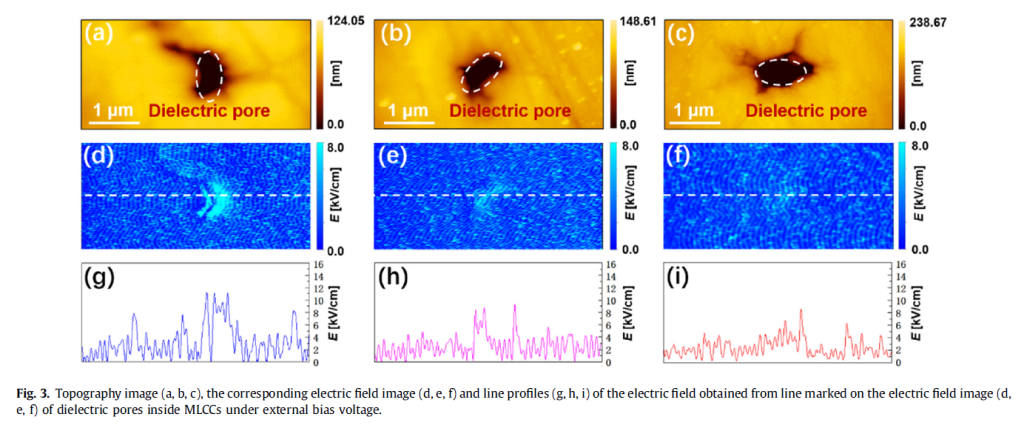Capacitors are vital to digital and analog circuit performance. As PCBs shrink, capacitors must scale down, challenging reliability due to thinner electrodes and dielectrics. MLCCs are prone to failure from material defects like voids in the ceramic, metal layers, or interfaces.
In their research paper “Unusual local electric field concentration in multilayer ceramic capacitors” (ref: Journal of Materiomics 9 (2023) 403-409;https://doi.org/10.1016/j.jmat.2022.09.010), Du et al used KPFM (Kelvin Probe Force Microscopy) to investigate the electric field across a metal/dielectric/metal structure comparable to real MLCCs.
They write “Local electric-field around multitype pores (dielectric pore, interface pore, electrode pore) in multilayer ceramic capacitors (MLCCs) was investigated using Kelvin probe force microscopy combined with finite element simulation to understand the effect of pores on the electric reliability of MLCCs. The Electric field was found to be concentrated significantly in the vicinity of these pores and the strength of the local electric-field was 1.5-5.0 times the nominal strength. Unexpectedly, the [field] concentration was much higher in the pores in the inner electrode than that in the dielectrics and dielectric-electrode interfaces. [They also saw that] geometry orientation … influenced the local electric field strength. The pores act as an insulation degradation precursor via local electric, thermal center, and oxygen vacancies accumulation center. Such unusual local electric field concentration of multitype pores can provide new insights into the understanding of insulation degradation evolution, processing tailoring and design optimization for MLCCs.”

The blue images (d-f) above show the electric field is significantly higher at the pores. For more information, see the full paper and its supplementary information.







